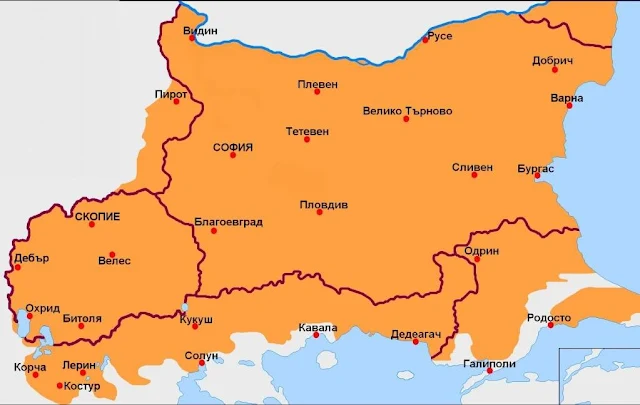Bulgarian dialects (гòвори) are part of the South Slavic dialect continuum, linked with Serbian to the west and bordering Albanian, Greek and Turkish to the south, and Romanian to the north. All Slavic dialects spoken in the geographical regions of Macedonia, Thrace, Moesia, and Dobrudzha are dialects of the Bulgarian language. [1] [2] [3] [4] [5] [6] [7] [8] [9] [10] [11]
The distribution of Slavic languages may be visualized by a chain of circles that cross and intermingle so that many transitive dialects arise. In this Slavic chain, Bulgarian is the south-most link which is located between Serbian and Russian. Because the interactions between Bulgarian and Serbian, on one hand, and between Bulgarian and Russian, on the other, are not equivalent, the similarities of Bulgarian to Russian and Serbian are not the same. While Bulgarians and Serbs lived very close to each other for a very long time on a long borderline, the connection between Bulgarian and Russian took place on a narrow strip along Dobrudzha which was populated with other foreign peoples and was interrupted by the wide and scarcely populated Danube delta. The relatively large similarity between Bulgarian and Russian can be explained by the former Russian-Bulgarian neighbourship in the old homeland of Bulgars and Bulgarian Slavs and with subsequent loans between Bulgarian and Russian.















